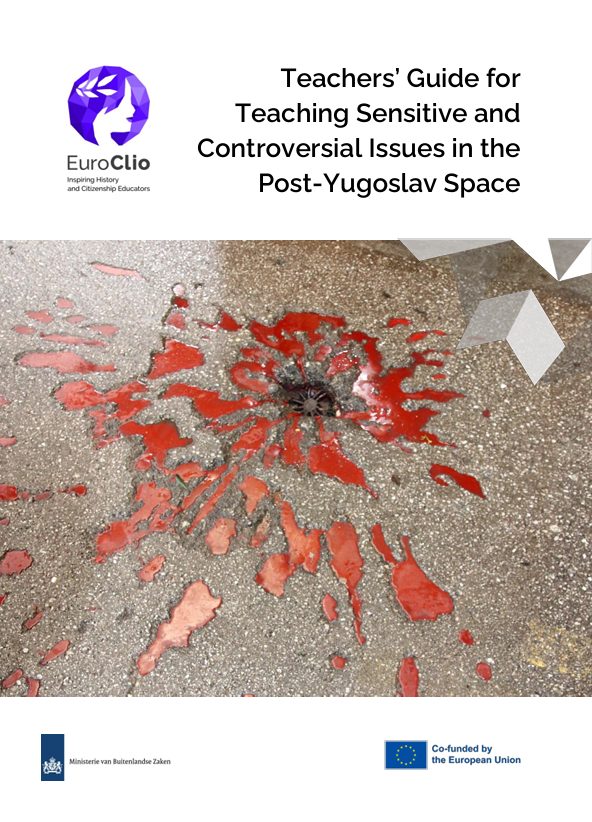This practice consists of multi-layered strategies of differentiation which touches upon several aspects of teaching. Tailoring the teaching strategies to the learning of students in a way that accommodates the various learning difficulties present in a given classroom as well as tailoring the assessment strategies to the different ways of learning can play a crucial role in creating a caring and comfortable environment between teachers and the students and has the potential to increase students’ confidence and thus facilitate their learning process.
The Practice
In her work at the Ahliyyah School for Girls, Kariman Mango and her colleagues apply the method of differentiation in the classrooms with students between 12 and 16 years old. The practice is multi-layered in terms of implementation, as several elements of teaching are concerned.
In an initial phase, the school’s special needs department diagnoses a specific student’s learning difficulties. Once the diagnosis has been made, the department communicates with the teachers, which can take the specific learning difficulty into account for the planning of the lessons.
With regard to the planning, the teaching strategies used in the classroom are hence differentiated in order to accommodate the varying learning difficulties. The teaching is hence tailored to the learning of the students. This practice makes active use of active student-centred learning, rather than adopting an ex cathedra teaching in which the teacher is simply sharing knowledge with students. For example, active student-centred learning could take the form of a physically produced timeline, with students representing the different events on it.
As a final step, the practice at the Ahliyyah School for Girls equally differentiates assessment. As with the teaching strategies, this practice tailors the assessment strategies and products to the different learning styles of the students. Rather than asking students with dyslexia or severe learning difficulties to produce a written essay, teachers could ask them alternatively to work on a class presentation. In this way, students are still sharing their acquired knowledge, but in a different way. Also, students with learning difficulties could be given more to complete an assessment, or be allowed to type an essay on a computer rather than having to write it on paper.
This multi-layered practice hence aims to find way to assess students based on their abilities, while maintaining standards of learning. Most importantly, implementing this practice contributes to building a caring environment between teachers, students, and the school. This will not only increase the confidence of students and hence facilitate their learning process, but also foster empathy among the students of a particular classroom.
Obstacles and lessons learned
The main challenges encountered in implementing this practice across the school is the lack of knowledge and the lack of training of teachers with regard to particular learning difficulties. Specifically, a full understanding of the impact of a teacher’s assessment and teaching strategies on students with learning difficulties is often not present, especially among recently graduated teachers. This lack of knowledge and understanding can result in teachers not being fully able to empathise with students which can be counter-productive to rendering a classroom more inclusive and the learning more accessible.
At the Ahliyyah School for Girls, the main tool to overcome this obstacle in rendering school history more accessible is the implementation of ‘co-teaching.’ Co-teaching is an applied mentorship training, in which an experienced teacher pairs up with a less experienced teacher for a series of lessons. In this way, the less experienced teacher can get insights into the various strategies of differentiation, both in the planning of teaching strategies and in assessment strategies.
The effect of the practice
This practice, applied throughout the Ahliyyah School for Girls in Amman, Jordan, has led to a comfortable and relaxed environment in which students felt able to develop and grow. Differentiating both teaching and assessment strategies has helped creating a caring attitude between teachers, students, and the school. This has increased students’ confidence which, in turn, facilitated their learning process. Most importantly, the practice has developed empathy among the students themselves. The raised awareness among teachers and students about the spectrum of learning difficulties has changed both the way teachers relate to students and the way educators teach.
About the interviewee
Kariman Mango is a History teacher at The Ahliyyah School for Girls in Amman, Jordan, with almost 20 years of experience in the field of secondary international education in Jordan. She is also the University Counsellor at her school and Assistant Examiner for the International Baccalaureate.
Background to the project
The Ahliyyah School for Girls is an inclusive school which accepts students with diagnosed learning difficulties. While the range of learning difficulties differs among the students, severe physical challenges to learning are not necessarily present among the students, as the school does not have the capacity.
The Ahliyyah School for Girls has a special needs department which diagnoses learning difficulties and consults the team of teachers of the Ahliyyah School for Girls. In addition, the school’s special needs department offers its services to other schools in Amman which do not have the same capacities, and works with private and public organisations on raising awareness to matters of inclusion and accessibility.
Additional information
In the case of this practice, the entire school environment including the board, teachers, students, and parents have been willing to implement this multi-layered practice of differentiation.
The practice is easily transferable to your classroom by following the principles which underpin it:
1. At the planning stage, consider how to deal with different students with different abilities. For this, differentiated instructions should be planned in a systematic way.
2. Creativity in teaching is fundamental for a successful implementation of this practice. Specifically, pass on more responsibilities to the students and loosen the emphasis on ex cathedra, teacher-centered learning.
Written by Henrik Hartmann, (EuroClio) based on an interview with Kariman Mango (The Ahliyyah School for Girls) in Cairo on 7 May 2017.





